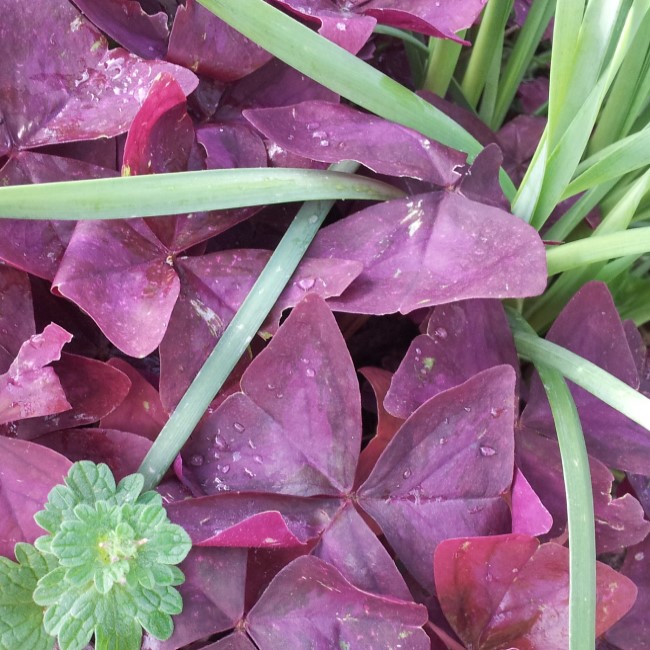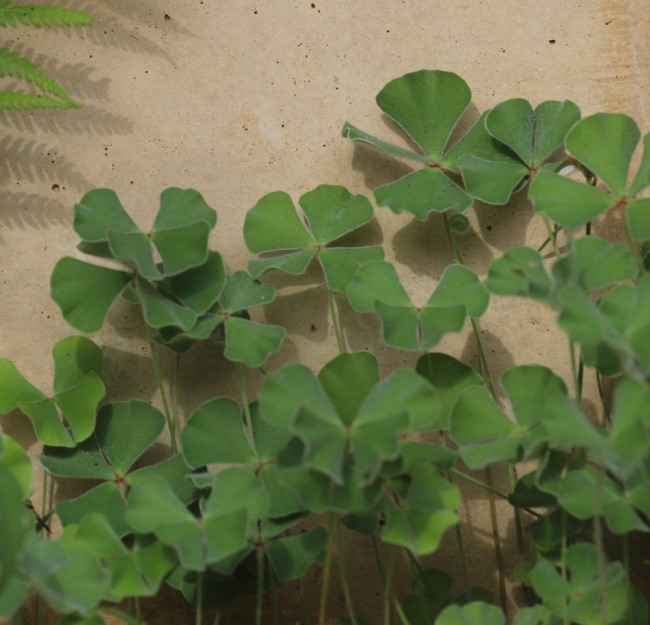No maintenance and no watering necessary — these are just two reasons to embrace this beautifully tough perennial.
One frequently asked question I get is how to get rid of oxalis and clover. While they appear similar and are often confused, neither poses a problem and, in fact, both are beneficial.

Oxalis, or wood sorrel, is often found in the shady portions of the yard. Depending on the species, oxalis will have three to ten leaflets, notched at the top and arranged palmately, hence the name false clover.
They store food in little tubers which helps them survive during inclement times, but hinders homeowners from eradicating or controlling them, which leads me to my point regarding oxalis. It does very well in the shade with limited water, nutrition or care. So why not embrace this beautifully tough perennial? My personal favorite is Oxalis triangularis (or regnelli). It has purple leaves and pink flowers, and grows in the shade with minimal water and no mowing.

Prior to 1950, clover was recommended by every lawn expert to be added to the lawn because it added nutrients and reduced soil compaction. Then the herbicide 2,4-D was discovered and overnight, clover became persona non grata. Hated and feared. Yet, nothing had changed about clover.
My good friend Dr. Jerry Parsons offers this defense for clover, “It’s green when nothing else is, it never has to be mowed or watered, and it goes away with the heat. What could be better?”
Indeed. So, ignore the big box store sales gimmicks. Let clover and oxalis grow. Neither are weeds and both are useful.




